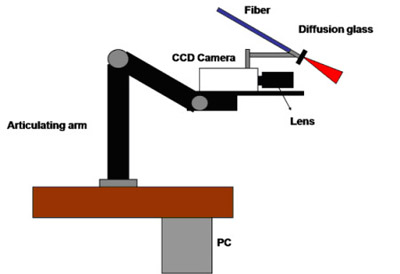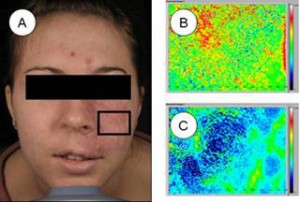The current port wine stain (PWS) treatment method is based on the premise that acute photocoagulation of the targeted microvasculature results ultimately in replacement of the damaged blood vessels with normal-sized ones. Unfortunately, the ultimate course of treatment to achieve this goal is primarily determined by the physician based on their clinical experience. We postulate that regions of persistent perfusion exist during and after treatment. These regions are largely “invisible” to the treating physician due to the current lack of appropriate clinical instrumentation. We suspect this issue contributes to the poor efficacy of the current treatment method. Immediate retreatment of these regions may result in an improved treatment outcome per session, reducing the number of treatment sessions required for complete PWS blanching.

To address this need, we propose use of laser speckle imaging (LSI) to provide real-time, quantitative feedback during laser surgery. We have collected preliminary patient data using our cart-based laser speckle imaging (LSI) instrument (Fig. 1). Raw speckle images were acquired from a PWS skin predefined site enclosed within the black line (Fig. 2A) prior to and 15 minutes after laser therapy. Prior to treatment (Fig. 2B), the blood flow distribution was fairly heterogeneous. After treatment (Fig. 2C), blood flow decreased presumably due to PWS blood vessel photocoagulation. Collectively, these data confirmed that regions of persistent perfusion remain immediately after laser therapy.
For more information, please refer to our recent publication in Lasers in Surgery and Medicine.

Collaborators: Kristen Kelly, Stuart Nelson, UC Irvine